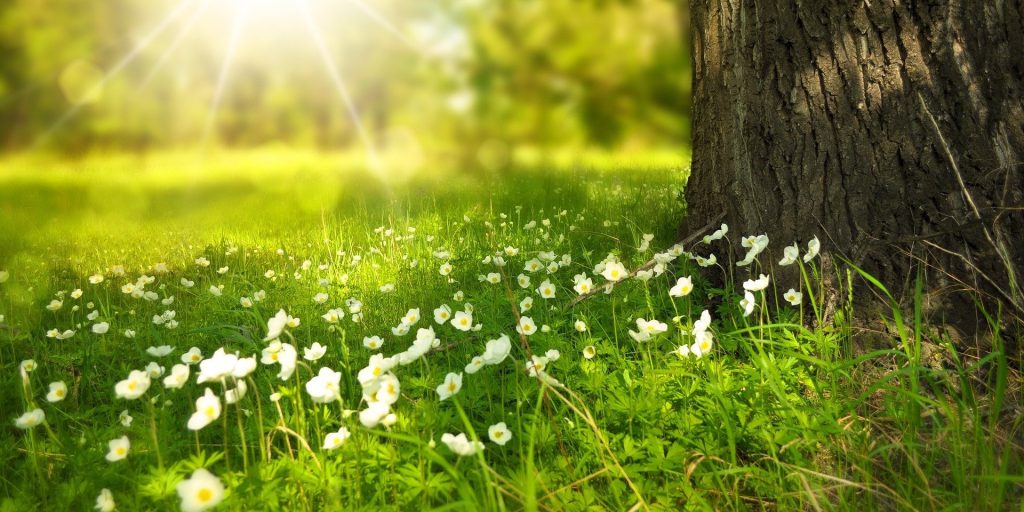
Investing in the planet means investing in the future
Investing in the planet means investing in the future: It is never late to learn, but it is good to start early. By writing such an oxymoron-ic statement, I am trying to stir the need to segregate the realization and methodologies of execution for a better approach towards an effective start. Many people who already are parents and those expecting to-become parents soon, must acknowledge the significance of nature and environment in the art of parenting. Everything that we consume or use, be it vegetables, fruits, water, air, and other resources, are all from nature. Nothing more we can do towards nature than cultivating the art of gratefulness towards it by being sensible and sustainable. To make this simple process more efficient, we need to start early. Right from their birth, children should be inculcated with the attitude of realizing the values of gifts nature bestows upon us. What could be the best way of thanking than integrating the same in the system of education?
Sustainability education unlocks a lot of doors for everyone on Earth to decipher solutions to problems that look even impossible to be bent. It encompasses a broad range of topics, including climate change, biodiversity, resource conservation, and sustainable development. It aims to provide individuals with an understanding of the interconnectedness of social, economic, and environmental systems, and to equip them with the tools to make informed decisions and take action to address environmental challenges. Hence, it has immense potential to transform lives and our future.
Education for Sustainable Development (ESD), a program by United Nations, underlines the system of education that encourages a sustainable and just society for all, through knowledge, skills, attitude, and values. If developed and implemented properly, ESD can become a powerful tool against the climate crisis and its impacts. ESD aims at a balanced future. Its objective is to equip the present and future generations to meet their needs using a balanced and integrated approach toward economic, social, and environmental aspects of sustainable development. As a component of measurement, ESD is an indicator for SDG 12 (Sustainable Development Goals) which stands for “responsible consumption and production.” Of 11, 8th target of SDG 12 aims at making people aware of sustainable development and lifestyles, with relevant information and harmony with nature. This goes without saying that all of this wouldn’t be possible without a strategic scheme of education. As Fredrich Froebel has emphasized that educational environment plays an important role in the development of a child’s mind and body, then why not start this process of strategic learning from their preschool and primary days?
The relation between nature and humans renders two-way impacts. Our actions, and nature’s resources. Nature, through its abundance and love, provides ample opportunities to children to connect with them (nature) and themselves. Not through rote memorization, but through unstructured free-play with nature and its systems, children improve their thought processes, creativity, comprehension, and sensibilities towards sustainable living. Let the child decide which path to walk inside the biodiversity parks, of course, you follow and guide them. At least, with this freedom of choosing, they would know what they feel there and are curious about. Another activity in the nature trails could be letting them analyze the variety of flowers, leaves, trees, birds, etc. they witness during their trails. By asking them to maintain a scrapbook of the same (maybe a sample leaf, stem, or anything else), you teach the attitude of valuing nature. This lets them connect.
I would like to cite an example here. Four-year-old Kashvi spent with her weekends with her parents on a seashore. There, she drank tender coconut water as her father mentioned that coconut trees are abundantly found in such regions. She saw fishermen catching varieties of fish. She also created a sandcastle by mashing, cupping, mixing, and moulding wet and dry sand. She loved the texture. She also collected conches from the seashore and made a neckpiece out of some of them. She used the remaining shells in decorating her pen stand.
Observe! Right from getting the essence of natural beauty, here, Kashvi learned several other things, including sustainable crafts, flora and fauna, and others. Just one visit of free-play (topped with guidance) increased her knowledge bank.
There is one of the programs that is close to my heart as it transforms lives of the children and youth by transforming the campuses of schools, colleges and Universities and guides them to tread the path of Net Zero or Low Carbon Future. The Climate Project Foundation (TCPF) – India and South Asia branch has a flagship program, known as “Green Campus Program (GCP).” GCP enables schools and colleges to conserve natural resources like water and biodiversity, optimize energy efficiency, manage waste and educate about climate change and sustainability while addressing well-being of the students as compared to conventional educational institutes.” The vision and mission of this program is to create a sustainable tomorrow. TCPF believes that climate crisis needs long-term and highly impactful solutions, and there is no better tool to resolve it than do it through education. To inculcate the values and bring about behavioral changes in our future generations making them more planet sensible, TCPF is setting perfect examples right there in the campuses through physical and behavioural changes through GCP.
“GCP serves as an effective transformative catalyst. As the name suggests, the objective of the program is to transform conventional campuses into green campuses. It is a platform wherein schools/Colleges are suggested measures to improve the sustainability factor and green practices on the core parameters water, energy, waste management, biodiversity, air quality and wellness. GCP also imparts climate change education to teachers as well as students. The best part is students get involved in the process. They can calculate their carbon footprints, change their lifestyle bring in behavioural changes to make this Earth a better place to live for all living beings.,” shared Rekha Lalla, Program Manager – GCP, TCPF.
As a perfect catalyst of STEM education, nature contributes to social, emotional, intellectual and physical development of children. It boosts critical thinking, problem-solving attitude, creativity, enthusiasm, and relationship skills among others. Fresh air, sunlight, oxygen and greenery can push children to get into physical activities with their friends or groups. They may run and play; climb trees or hug them; dip feet in water; splash water from the spring collected in their cupped palms; or simply lay down and gaze at the clouds to create their own imaginary world. Any child or any person, who has spent a substantial amount of time in nature or natural patches, knows the real meaning of connection, freedom, happiness and serenity. Ambitious SDGs have a universal agenda to transform the world for better, and the challenge it has issued is to provide all the children with quality early childhood development, care and pre-primary education by 2030. Nature-based education offers a platform that blends quality with learning.
Tapping the emotional wellness, nature helps in reducing anger, anxiety, impulsive nature, stress, disorderly behaviour and negative thinking. Nature dons plentiful health benefits, including healthy heart and mind. It is the best pillow, mattress or quilt to improve your coping skills and resilience. A simple barefoot walk on green grass can stimulate reflexology further reducing pain and inflammation. Likewise basking under the sun, improves the level of Vitamin D, which further helps in balancing mood, motivation, strengths, and positivity. Walking, jogging, exercising or sprinting in a lush green park or biodiversity park alleviates oxygen levels stimulating brainpower and working as stress buster. A picnic spot in the lap of nature is incomparable! Outdoor is magical and so is indoors.
The pandemonium of pandemic COVID has put a thick cloak of suspicion on outdoor activities. The limitations or restrictions of staying indoors have affected the overall development of the children. However, the good news is that one can still stay connected to nature and be sustainable even while indoors. Indoor air-purifying plants can help children breathe better-quality of oxygen. Children can still be taught to be responsible towards nature by participating in upcycling and waste management activities that take place at home. Simply by knowing when to turn off the lights and water taps and more, you make them responsible towards nature. Make a few bottle planters with them and make them part of your daily gardening activities, especially for vegetables and fruits. This will help them understand how food grows and gets into their plates. Acknowledging natural elements like birch, sand, leaves, rocks, pebbles, etc. is another way. Listen to the natural sounds and they calm the mind and senses.
How does a cuckoo or a cow sound? How does a flowing river sound? Let them hear and register in their memory of formative years and during primary education that gradually transitions to secondary and higher education. You can also give them near-to-reality experiences through 3D or Augmented Reality systems (especially, books), as these will help them observe and learn better. Expose them to crafts and art with nature. Be it indoors or outdoors, one can stay connected with nature. The will to do so should be strong and backed by thorough understanding of the reason.
The idea is to stay connected with nature by incorporating the EfS approach (Education for Sustainability) that brings together students, schools, and communities with the values and motivation to step up for sustainability-related actions starting with their personal lives and scaling it up to the community and worldwide, starting now. Moreover, the opportunities for green jobs is expanding day by day. They are well-paying too. This underlines that fact that they will get a humongous amount of scope to implement their learning professionally and make a living.
However, this cannot be a one-way process. There must be a holistic approach for this. The entire ecosystem of pedagogy should have students, teachers, Heads/ Deans/ Principals, parents and communities intertwined so as to have a positive fission reaction in the co-creation of a greener future.
It is never late for either the parents, teachers, or schools to begin teaching their children keeping an angle of sustainability in mind – anyone can start EfS anyway at any growing age of a child. This is how a positive behavioral and attitudinal change in them can be nurtured so they can visualize the world in a much better way and undertake decisions accordingly. Lastly, this is how impacts can be seen, felt, and optimized. All it requires are time and dedicated efforts.
It goes without saying, by investing ourselves for sustainability education, we’re not only investing in our planet but also investing in our future.



